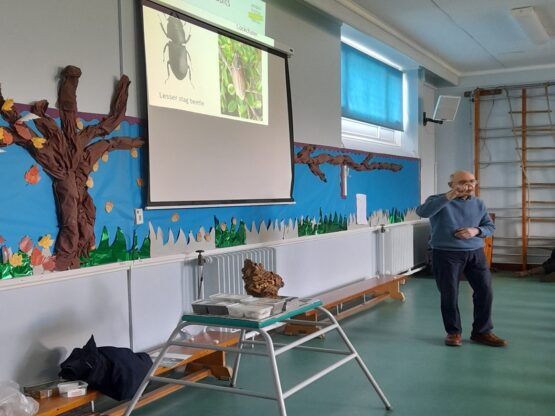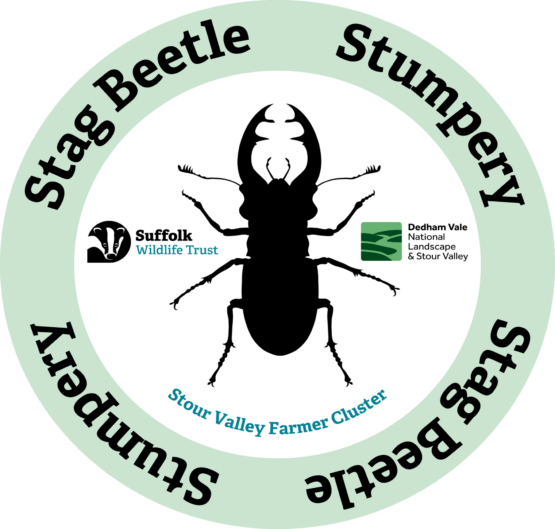Farming in Protected Landscapes Case Study:
Creation of Stag Beetle stumperies

Over the past two years, the Suffolk Wildlife Trust were awarded £6,387.50 and £12,268.85 to work with 12 farms and landowners in the Dedham Vale National Landscape and Stour Valley to create 25 stumperies as habitat for stag beetles.
Stag beetles are the UK’s largest beetle and they are classed as a Near Threatened species. Their distribution is highly fragmented, and their biggest
threat is habitat loss. Stag beetles require continuity of habitat, which is undisturbed broad-leaved deadwood in contact with soil or below ground level.
Tree loss, clearing of older trees, removal of decaying timber, and tidying of deadwood are activities which work against them. This project aims to address that by creating perfect locations for eggs to be laid and the larvae to grow, which can take up to 6 years before they pupate into adults.
The larvae are 3 to 4cm long. Once they pupate they emerge as shiny black adults, the males are up to 7.5cm long and females smaller. The male’s jaws look like large antlers (hence their name) which they use to fight off other suitors.
The adult beetles live for only a few weeks in which they mate and the female then burrows underground to lay her eggs in rotting timber, which the larvae feed from. Females don’t fly far, if at all, so its important to have stumperies in close proximity to each other.
What work has been done?
Stour Valley Farmer members, landowners and community groups have offered their support in providing the locations for the stumperies. They need light free draining soils, in partial sunlight, close to hedges, tree lines or a woodland edge.
Holes around 80cm deep were dug and filled with hardwood timber, so that the timber is mainly underground and can rot over the years. Many are alongside footpaths, and are marked with a small sign to explain their purpose.
Sharing information
Landowners took part in a half day workshop to help them understand and connect with the importance of the Stour Valley for nature and stag beetles in particular. Local Primary schools also participated in the project, and children have been enjoying a talk about the fascinating lives and significance of stag beetles within the Stour Valley.


